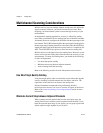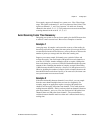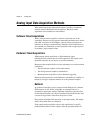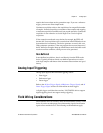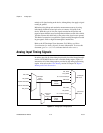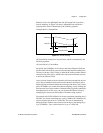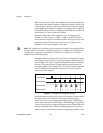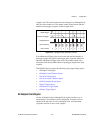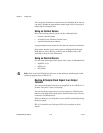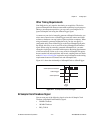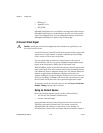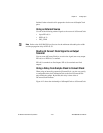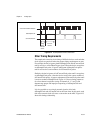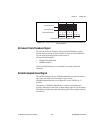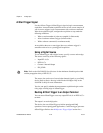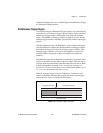
Chapter 4 Analog Input
NI 6238/6239 User Manual 4-16 ni.com
You can specify an internal or external source for ai/SampleClock. You also
can specify whether the measurement sample begins on the rising edge or
falling edge of ai/SampleClock.
Using an Internal Source
One of the following internal signals can drive ai/SampleClock.
• Counter n Internal Output
• AI Sample Clock Timebase (divided down)
• A pulse initiated by host software
A programmable internal counter divides down the sample clock timebase.
Several other internal signals can be routed to ai/SampleClock through
RTSI. Refer to Device Routing in MAX in the NI-DAQmx Help or the
LabVIEW 8.x Help for more information.
Using an External Source
Use one of the following external signals as the source of ai/SampleClock:
• Input PFI <0..5>
•RTSI <0..7>
•PXI_STAR
Note Refer to the NI 6238/6239 Specifications for the minimum allowable pulse width
and the propagation delay of PFI <0..5>.
Routing AI Sample Clock Signal to an Output
Terminal
You can route ai/SampleClock out to any output PFI <6..9> or RTSI <0..7>
terminal. This pulse is always active high.
You can specify the output to have one of two behaviors. With the pulse
behavior, your DAQ device briefly pulses the PFI terminal once for every
occurrence of ai/SampleClock.
With level behavior, your DAQ device drives the PFI terminal high during
the entire sample.
PFI <0..5> terminals are fixed inputs. PFI <6..9> terminals are fixed
outputs.



